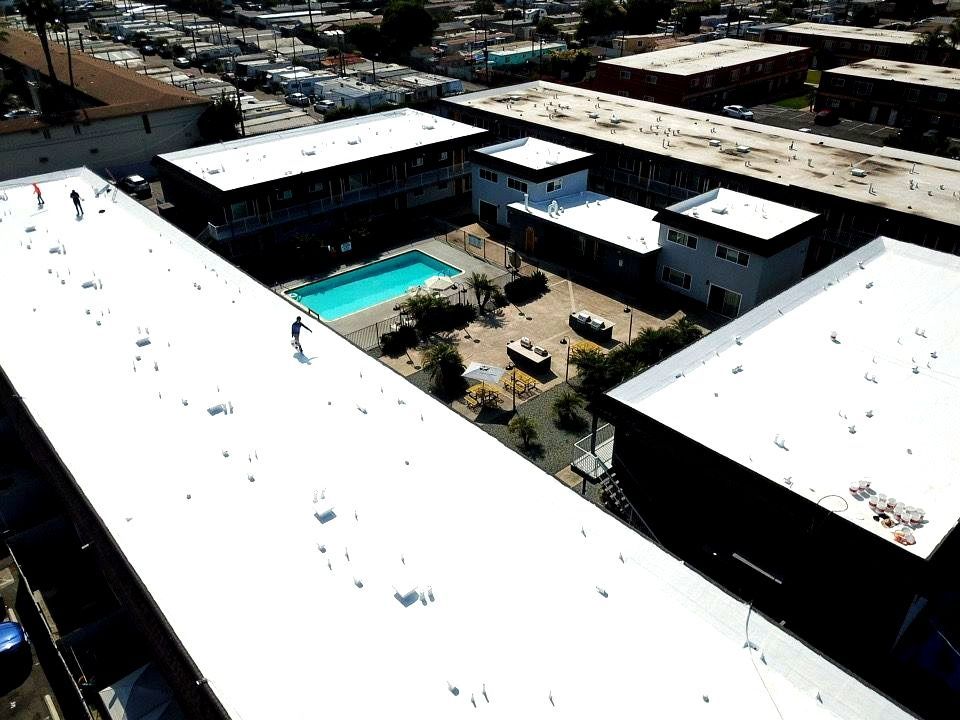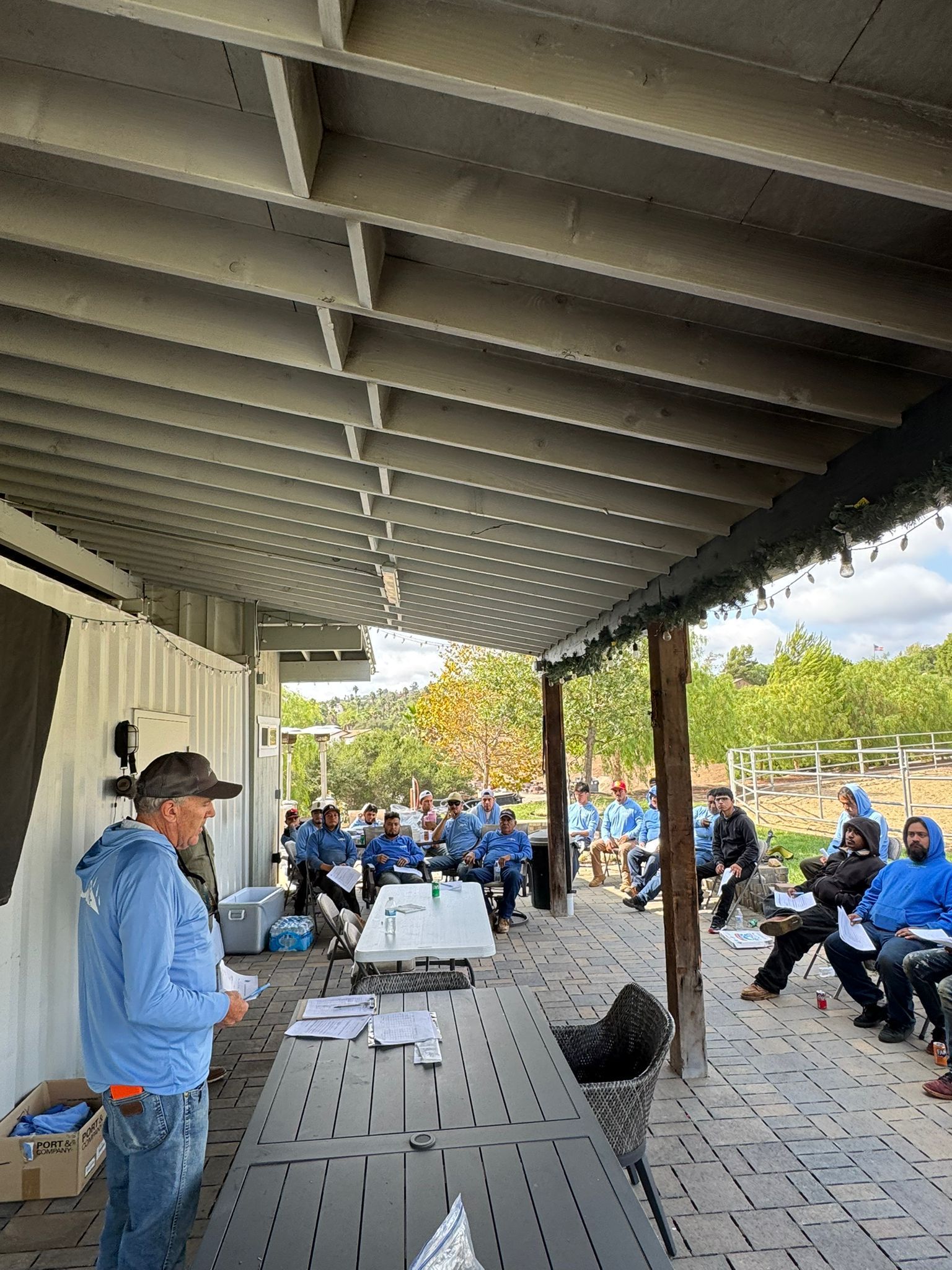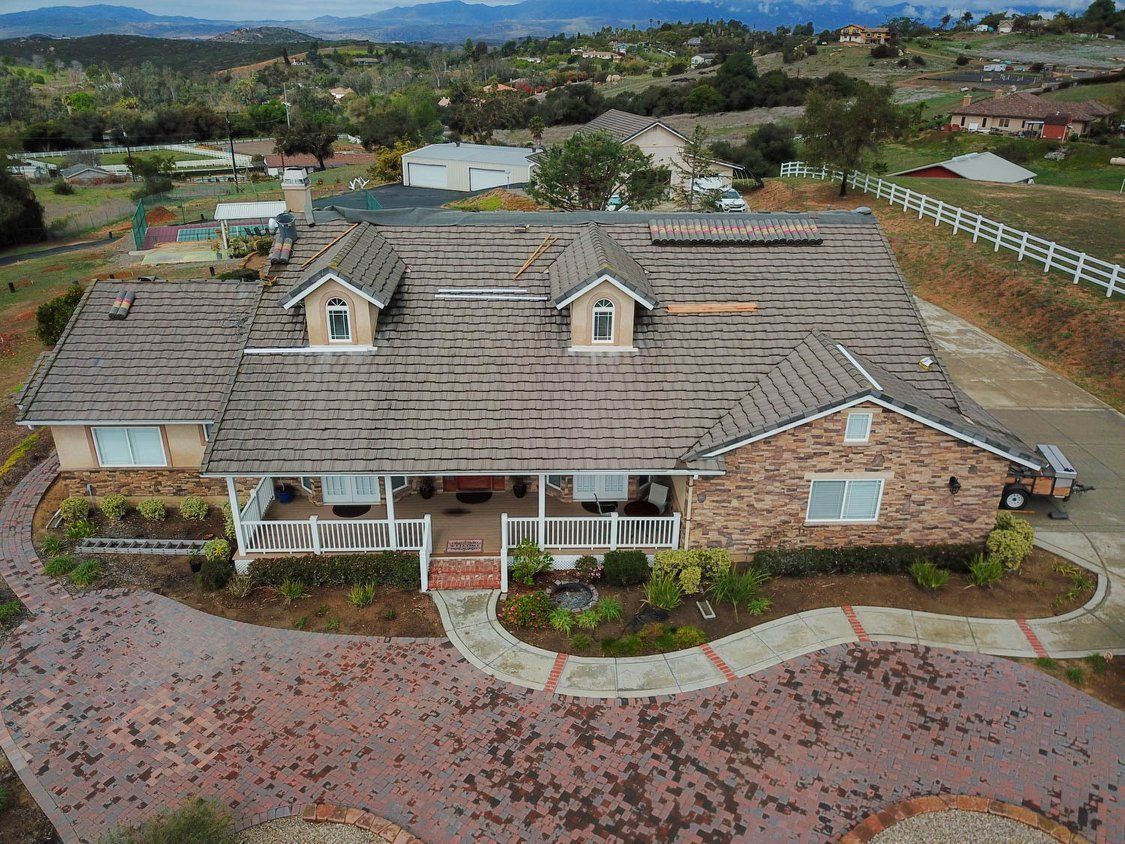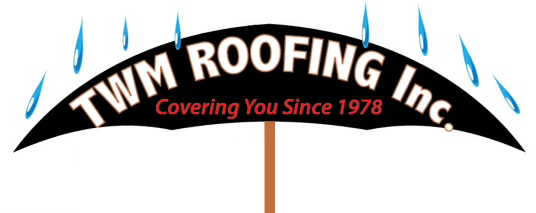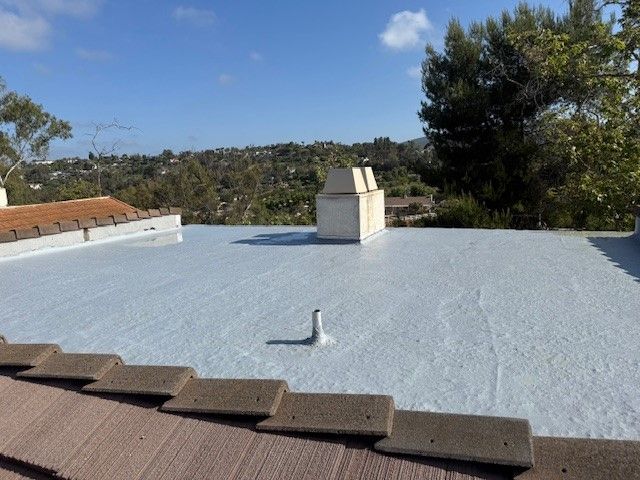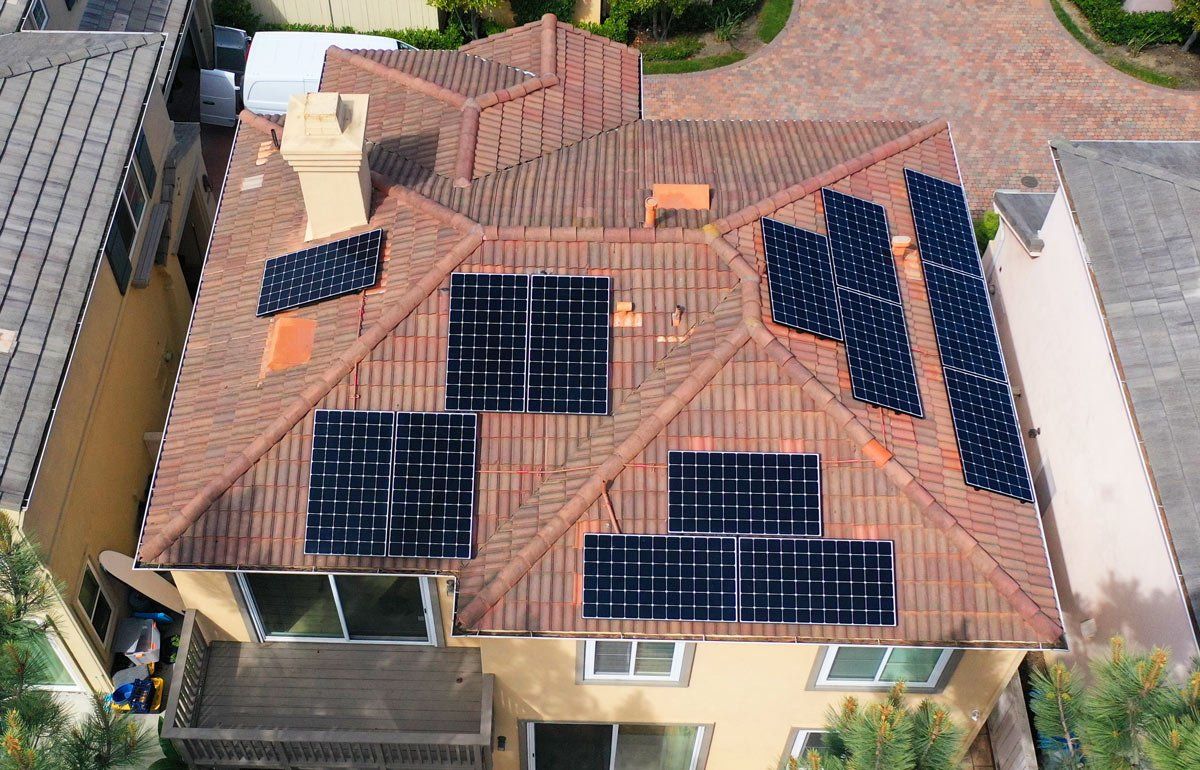Energy-Efficient Roofing Solutions for a Cooler San Diego Summer
As one of the top roofing companies in Southern California, TWM Roofing offers energy-efficient roofing solutions to help you stay cool and comfortable this summer.
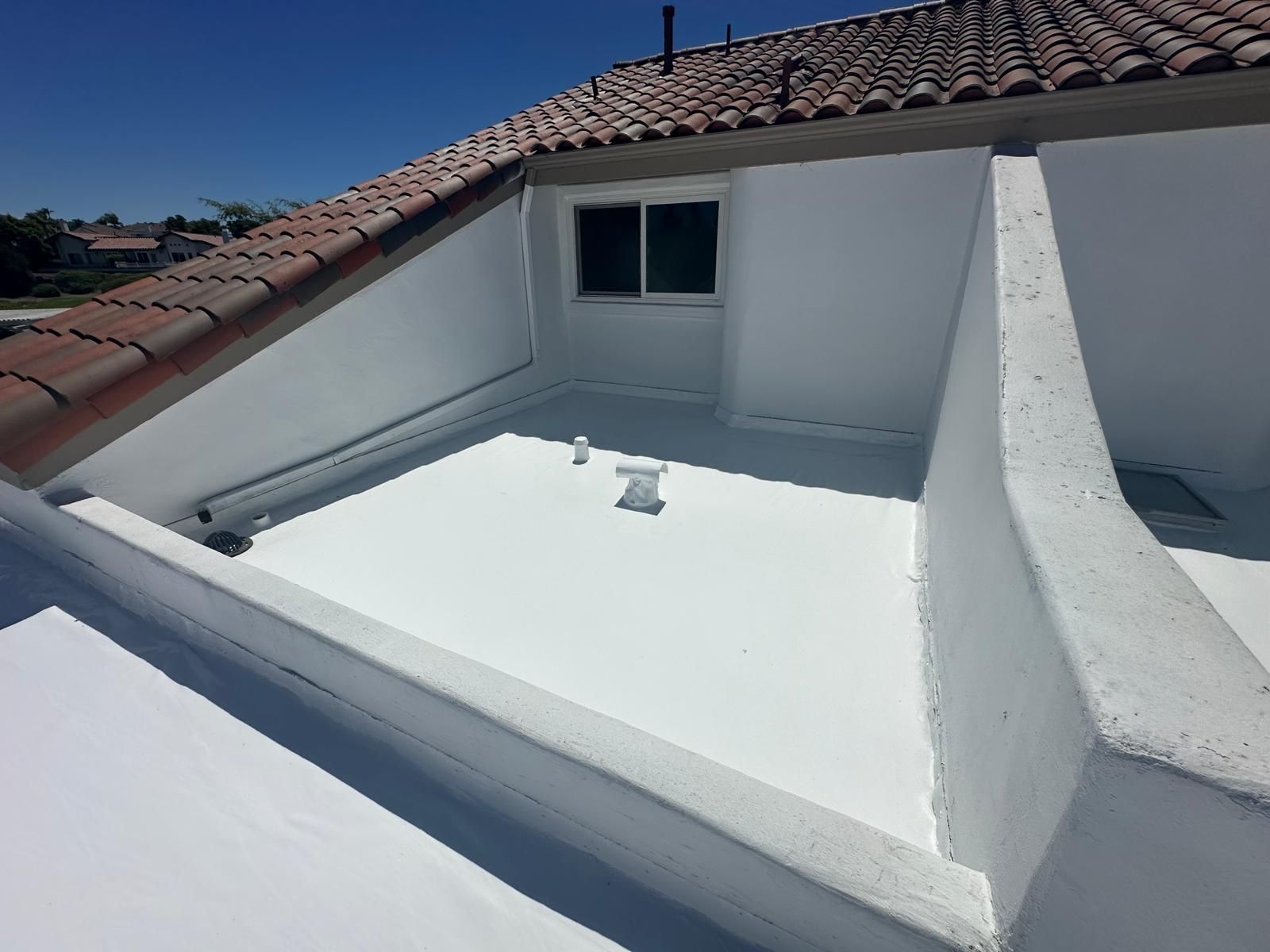
1. Cool Roof Coatings: A Simple Upgrade for Big Savings
Cool roof coatings are a cost-effective way to improve the energy efficiency of your existing roof. These coatings are designed to reflect more sunlight and absorb less heat compared to traditional roofing materials. In San Diego’s sunny climate, this can significantly reduce indoor temperatures, making your air conditioning system work less and lowering your energy bills.
Benefits of cool roof coatings:
✅ Reflects UV rays and heat
✅ Extends the life of your roof
✅ Lowers indoor temperatures by up to 10°F
✅ Class A Fire Rating
Energy Savings: According to the U.S. Department of Energy, cool roofs can reduce energy use by up to 10-15% in air-conditioned residential buildings.
Temperature Reduction: Research indicates that cool roofs can lower roof surface temperatures by up to 55°F on hot sunny days, significantly decreasing heat transfer into the building.
2. Reflective Roofing Materials: Beat the Heat Naturally
If you’re considering a roof replacement, choosing reflective roofing materials can make a big difference. Options like metal roofing, light-colored shingles, or special energy-efficient tiles help reflect sunlight away from your home. Metal roofs, in particular, are durable and excellent at reducing heat absorption.
Best reflective roofing materials for San Diego homes:
- Metal roofing – Highly reflective and long-lasting
- White or light-colored asphalt shingles – A more affordable, energy-efficient option
- Clay or concrete tiles – Naturally cooling and perfect for San Diego’s coastal climate
For more information about Cool Roofs, go to the Cool Rated Roof Council (CRRC)or read more about CRRC below.
Energy Impact: Studies have shown that reflective roofing materials can reduce air conditioning energy use by up to 15% in single-story buildings.
Indoor Comfort: Implementing reflective materials can lower indoor temperatures by approximately 2.2 to 5.9°F, enhancing comfort during hot weather.
Metal Roofs: A Fire-Resistant and Energy-Efficient Solution
In addition to their energy-saving benefits, metal roofs offer superior fire protection, making them an excellent choice for San Diego homeowners, especially during fire season. Unlike traditional asphalt shingles, which can ignite from flying embers, metal roofing is non-combustible and has a Class A fire rating, the highest rating for fire resistance. This makes metal roofs highly effective at preventing the spread of flames during a wildfire. Additionally, metal roofs reflect sunlight, reducing heat absorption and keeping homes cooler, which is particularly beneficial during the hot, dry months. With their durability, energy efficiency, and fire resistance, metal roofs provide both safety and long-term savings for homeowners in fire-prone areas.
3. Proper Roof Ventilation: Keep Your Home Breezy
A well-ventilated roof is crucial for maintaining a comfortable indoor temperature. Without proper airflow, heat gets trapped in the attic, making your home hotter and increasing the strain on your cooling system. Installing ridge vents, soffit vents, or attic fans can help regulate temperature and improve energy efficiency.
Signs your roof needs better ventilation:
- High indoor temperatures even when the AC is on
- Excess moisture or mold in the attic
- Increased energy bills during summer
- Condensation issues in your attic or your homes interior
4. Solar Panels: The Ultimate Energy-Saving Investment
San Diego is one of the best places in the country for solar energy. Installing solar panels on your roof not only helps power your home but also provides shade that reduces heat absorption. Many homeowners qualify for rebates or tax incentives, making solar a smart long-term investment.
Why solar panels make sense in San Diego:
🌞 Reduces electricity costs year-round
🌞 Increases home value
🌞 Provides clean, renewable energy
Cost Savings: While individual savings can vary, incorporating solar panels can lead to significant reductions in electricity costs over time.
Environmental Impact: Utilizing solar energy decreases reliance on fossil fuels, reducing your home's carbon footprint and contributing to a cleaner environment.
Cool Roof Rating Council (CRRC) and Its Impacts on Southern California Roofing
The Cool Roof Rating Council (CRRC) is a nonprofit organization that develops fair, accurate, and credible methods for evaluating and labeling the radiative properties of roofing and exterior wall products [1]. The CRRC's mission is to provide objective, scientific information related to cool surfaces to support informed decisions about the impacts of heat islands, extreme heat, and energy use in the built environment [1].
CRRC Rating Programs
The CRRC maintains a third-party rating program that rates and publishes a roof product’s radiative properties, including:
- Solar Reflectance: The ability of a material to reflect sunlight.
- Thermal Emittance: The ability of a material to release absorbed heat [1].
Impacts on Southern California Roofing
Southern California, including San Diego, Temecula, Murrieta, and other cities in San Diego County, has specific building codes and standards that incorporate cool roof requirements. Here are some key impacts:
California Building Energy Efficiency Standards (Title 24, Part 6)
- Low-Slope Roofs: All new or replacement low-slope roofs are required to be cool roofs [1].
- Steep-Slope Roofs: Required in several California climate zones [1].
- Minimum Criteria: Roofs must meet minimum aged solar reflectance and thermal emittance values [1].
Local Initiatives
Many cities in Southern California have adopted or exceeded state requirements to promote cool roofs:
- City of San Diego: Implements cool roof requirements as part of its Green Building Program [2].
- City of Chula Vista: Has specific energy codes promoting cool roofs [2].
- City of Oceanside: Encourages the use of cool roofs in its sustainability initiatives [2].
- City of Carlsbad: Includes cool roof provisions in its local building codes [2].
- City of Temecula: Promotes energy-efficient building practices, including cool roofs [2].
- City of Murrieta: Incorporates cool roof requirements in its building codes to enhance energy efficiency [2].
Benefits of Cool Roofs
- Energy Savings: Reduces the need for air-conditioning by reflecting sunlight and emitting heat [3].
- Extended Roof Life: Helps prolong the lifespan of roofing materials [3].
- Heat Island Mitigation: Reduces the urban heat island effect, contributing to cooler urban environments [1].
Finding Qualifying Products
The CRRC's Rated Products Directory is a valuable resource for checking whether roofing products comply with Title 24 or other codes and standards [1]. The directory includes:
- Product Type
- Color
- Solar Reflectance
- Thermal Emittance
- Solar Reflectance Index (SRI) [1]
References
[1] Cool Roofs: Codes and Standards - California
[2] Title 24: What Homeowners Should Know About Cool Roofs - Decra
[3] Home - Cool Roof Rating Council
Investing in energy-efficient roofing solutions is one of the best ways to keep your San Diego home cool and comfortable this summer. Whether you choose cool roof coatings, reflective materials, better ventilation, or solar panels, these upgrades can help lower your energy bills and extend the life of your roof.
Is your roof ready for summer? Contact TWM Roofing today to explore the best energy-efficient options for your home or business.
Call TWM Roofing at 760-731-0777 or book online.
